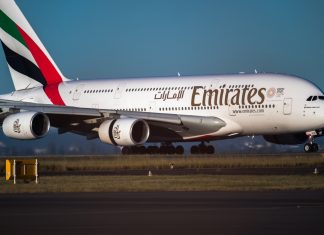The Australian government is seeking expressions of interest for the construction of a 2,700-meter paved runway near Australia’s Davis research station in East Antarctica. The runway would support year-round air access between Hobart and Antarctica. However, the costly and ambitious plan to build the first paved runway in Antarctica is receiving some critical blowback.
Australia claims about eight million square kilometers (or about 42%) of Antarctica and a 200-mile nautical zone. Australia’s primary staging post for trips south is Hobart, capital of Tasmania. Over some of the Antarctica summer, planes can access a three-and-a-half kilometer glacial runway at Australia’s Wilkins Aerodrome, 70 kilometers from Casey station. There’s also a smaller two-kilometer ski-way able to handle Twin Otter and Basler aircraft near Davis Station.
Over the summer, the Wilkins Aerodrome runway sees Airbus A319 aircraft operated by Skytraders and the odd Royal Australian Air Force C-17A. But these runways are only operational at the beginning and end of the summer months. Australia wants year-round reliable access to Antarctica to facilitate better research and be able to respond to emergencies.
“The construction of a paved runway at Davis research station would represent a significant capability boost that would revolutionize our scientific activities and enhance Australia’s leadership and long-term interests in the region,” says the Australian Antarctic Division’s website.
Right now, the Australian government is formally seeking expressions of interest to help build the multi-billion dollar runway. The runway will take decades to construct. The proposed build will include a 2,700-meter paved runway capable of handling Boeing 787 Dreamliners or an Airbus A330. There will also be related infrastructure including a taxiway, aircraft apron, runway lighting, and associated buildings to accommodate services, such as air traffic and rescue and fire fighting services. Thrown into the deal is a new wharf and access road to Davis Station.
Unsurprisingly, not everyone is enthusiastic about the plan. The University of Tasmania is one of the world’s leading Antarctic research institutions. In a paper published in mid-2020, researchers Shaun Brooks and Dr Julia Jabour argued Australia’s motivation to build the paved runway was primarily geo-political.


























